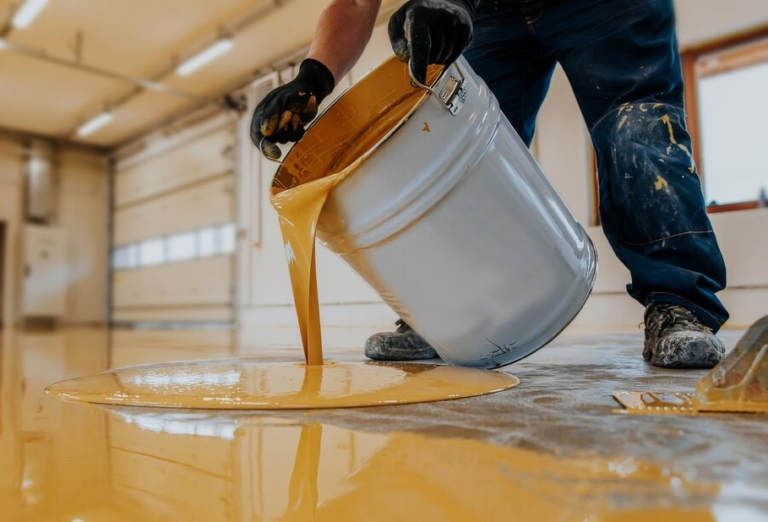
Industrial Epoxy Floor Coating: What Makes It Superior
In any case, whether for any given facility, the flooring characteristics such as its durability and reliability greatly affect day-to-day operations, safety, and even the life cycle cost of the asset. Flooring should be apt and suitable because of the hazards present in the industrial setting, such as heavy machinery, chemical exposure, and foot and vehicular traffic. Epoxy floor coating is one of the most popular and effective choices today. A wide range of industries prefer epoxy flooring.
Wondering why are epoxy floor coatings the best option, though. This article will underline what makes it the best option among industrial applications worldwide. Keep reading!
Understanding Epoxy Floor Coating
Epoxy floor coatings are protective surface layers composed of epoxy resin and a hardener. Through chemical reactions, these components generate a stiff, plastic-like substance that attaches securely to concrete and other surfaces. The outcome is a resilient, smooth, continuous finish that provides several advantages, especially in rigorous industrial environments.Pros of Epoxy Floor Coatings for Industrial Applications
Exceptional Durability
Chemicals, heavy machinery, and constant foot traffic are tests that industrial flooring solutions must pass with excellent results. Epoxy floor coverings are a smart investment due to their long lifespan. Its durability means you won’t have to spend as much on repairs or replacements, which ultimately saves you money.Chemical Resistance
The chemical and pharmaceutical industrial sectors are just two of the many sectors that deal with substances that can be destructive to standard flooring. The other cybernetic feature of epoxy flooring is that it is resistant to oil, solvents, and other chemicals, thereby helping to maintain a neat and hygienic working environment.Enhanced Safety
Industrial environments emphasize safety, and epoxy flooring can be crucial in this aspect. This flooring can be tailored with anti-slip substances to mitigate workplace injuries. The glossy texture of epoxy flooring promotes illumination by reflecting ambient light, hence improving visibility in expansive facilities.Ease of Maintenance
Industrial floors must be easy to clean to maintain hygiene and efficiency. Epoxy’s non-porous surface resists dirt, oil, and moisture, making it straightforward to clean. Learning how to clean epoxy floor coating involves simple steps, such as sweeping or mopping with mild detergents, ensuring minimal downtime during maintenance.Customizable Aesthetics
Creating beautiful offices is currently viewed as a critical goal by many organizations. Epoxy coatings are available in a variety of colours and finishes, such as terrazzo or metallic, and can be used to produce beautiful surfaces. It is easy to alter to fit the requirements of your business or brand. For example, you can have safety lines, demarcation zones, or even your company logo incorporated into the floor design.Cost-Effectiveness
While the initial installation of epoxy floor coatings may seem higher than some alternatives, their long lifespan and low maintenance costs make them an economical choice in the long run. Businesses benefit from reduced repair costs and minimal downtime for maintenance.How to Epoxy Garage Floor: A Step-by-Step Guide
Industrial-grade epoxy coatings are also popular for garages, where durability and aesthetics are equally important. Here’s how to epoxy a garage floor effectively:Preparation:
- Clean the floor thoroughly to remove dirt, grease, and oil.
- Repair any cracks or holes in the concrete surface using a patching compound.
- Etch the floor with an acid solution or use a grinder to create a rough surface for better epoxy adhesion.
Priming:
Apply a primer to enhance the bond between the concrete and the epoxy. Use a roller or brush to spread the primer evenly.Mixing Epoxy:
Adhere to the manufacturer’s guidelines for combining the resin and hardener. Ensure accurate readings for optimum cure.Application:
- Start by cutting the edges with a paintbrush, then use a roller to apply the epoxy to the larger areas.
- Work in small sections to maintain a wet edge and achieve a seamless finish.
